Robotic Takeover
Temple Engineering Robotics Club takes on the NASA Lunabotics Competition
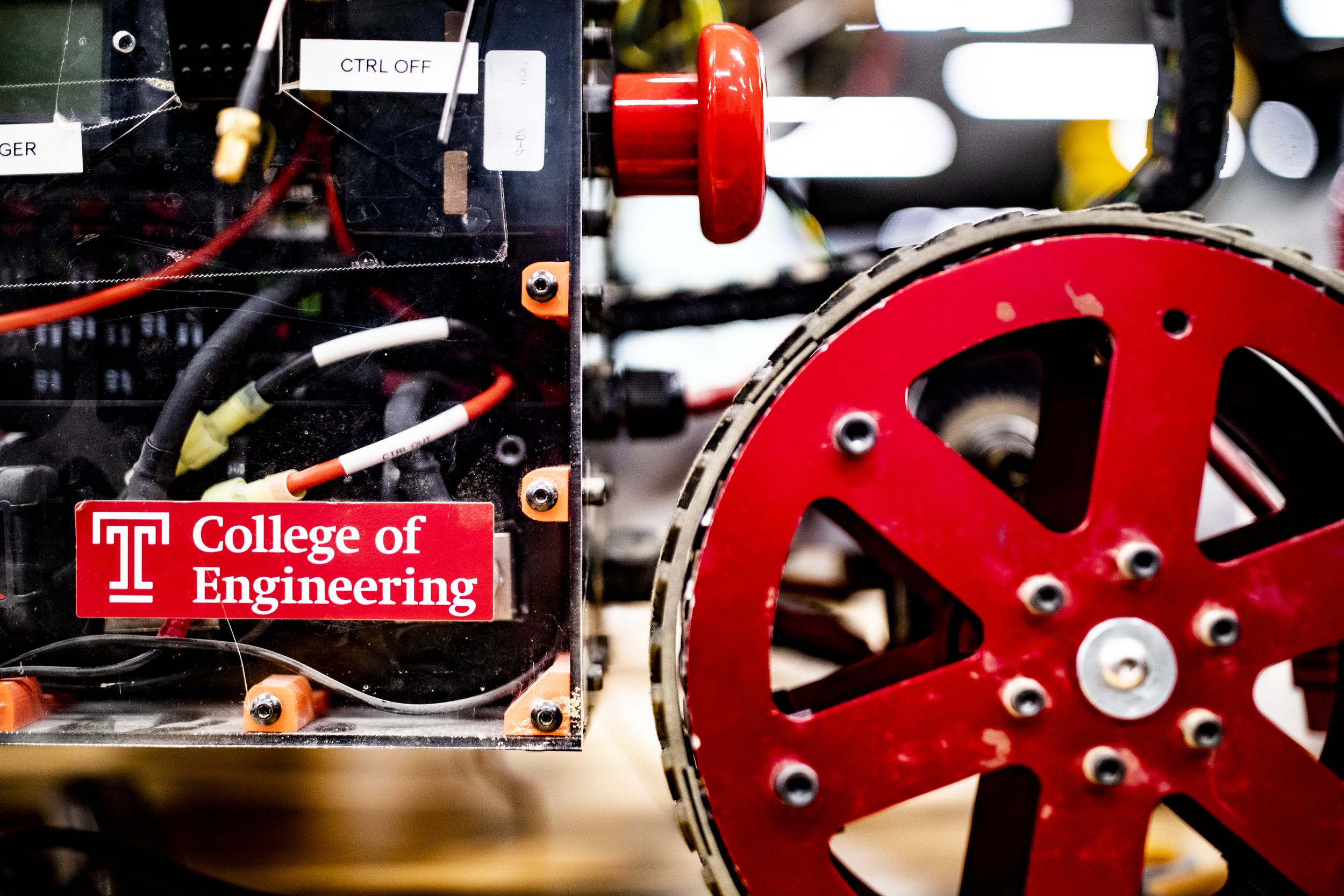
From May 11th to the 14th, the Temple Engineering Robotics team will compete in the NASA Lunabotics Competition qualifier at the University of Central Florida.
Held in Florida, with over 50 teams competing, the Lunabotics competition allows universities and colleges across the country to build a robot that is capable of completing tasks on a lunar surface in support of future moon exploration mission goals.
After years of making tweaks and improvements to their existing NASA Lunabotics Challenge robot, for the first time since 2019, the Temple Robotics Team built a new robot from the ground up.
A change in the competition rules and format prompted the team to retire the old robot, JARED (Just A Robot Excavating Dirt), and in Fall 2023 they got to work on building a new robot.
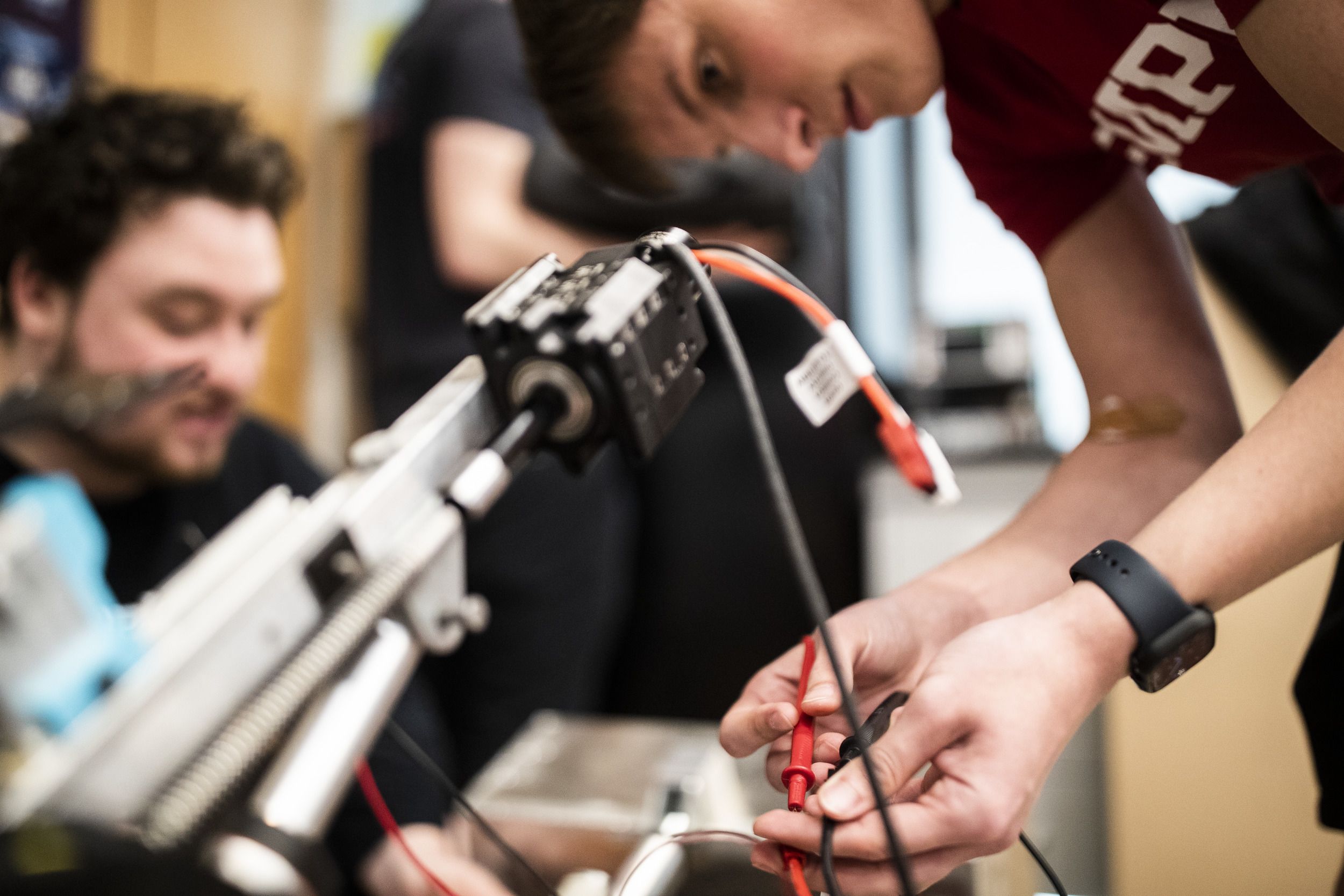
Starting From Scratch
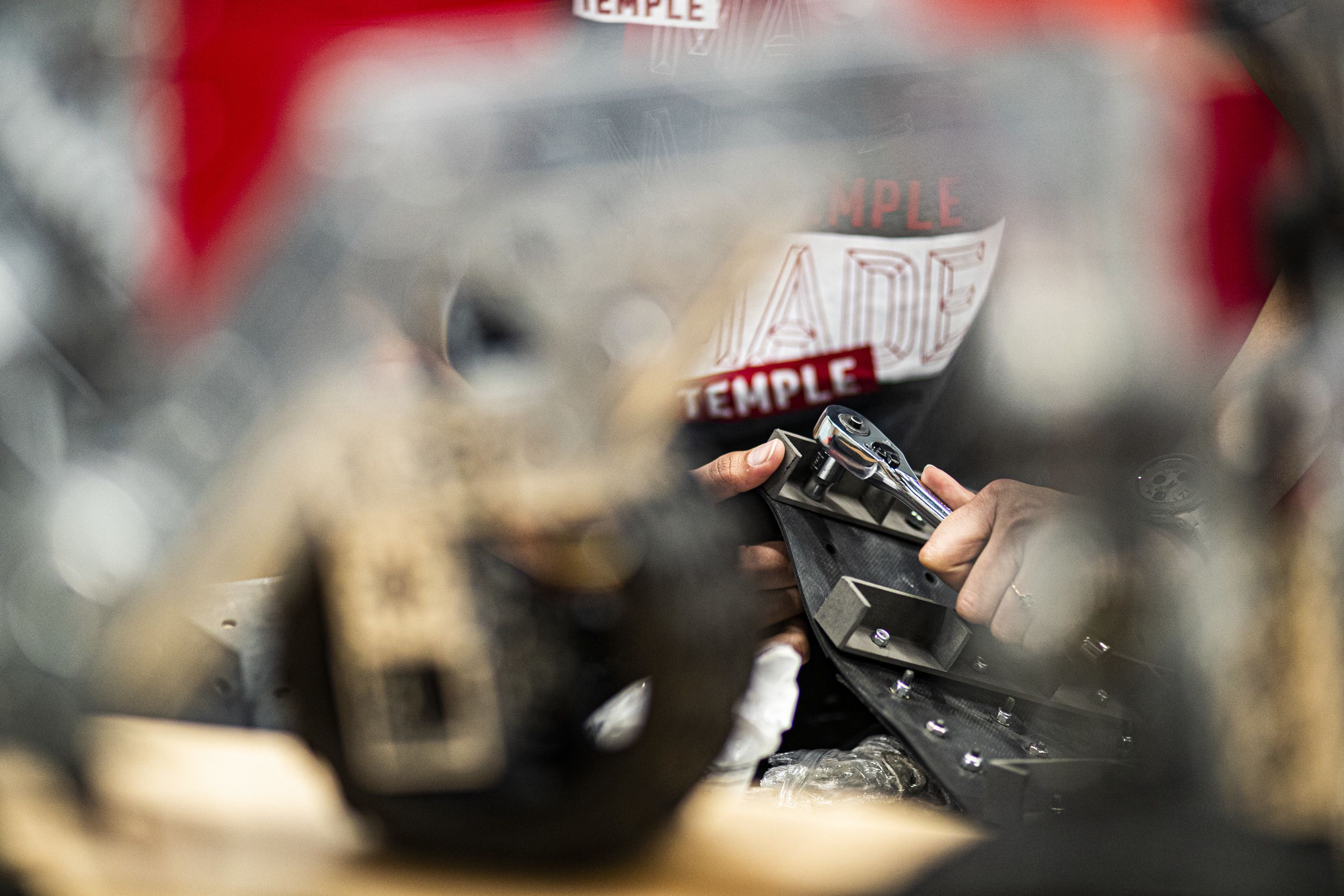
Competition Changes
Last year, when it was officially announced that the competition would be changing, the Robotics team was faced with two options: completely taking apart JARED and rebuilding it with an entirely new system or building a new robot.
"Because [a previous] team worked on this, we didn’t want to completely destroy their work." - Rocco Guzman, Mechanical Lead
Thus, the decision was made. The Temple Robotics Team would be building an entirely new robot for the 2024 competition.
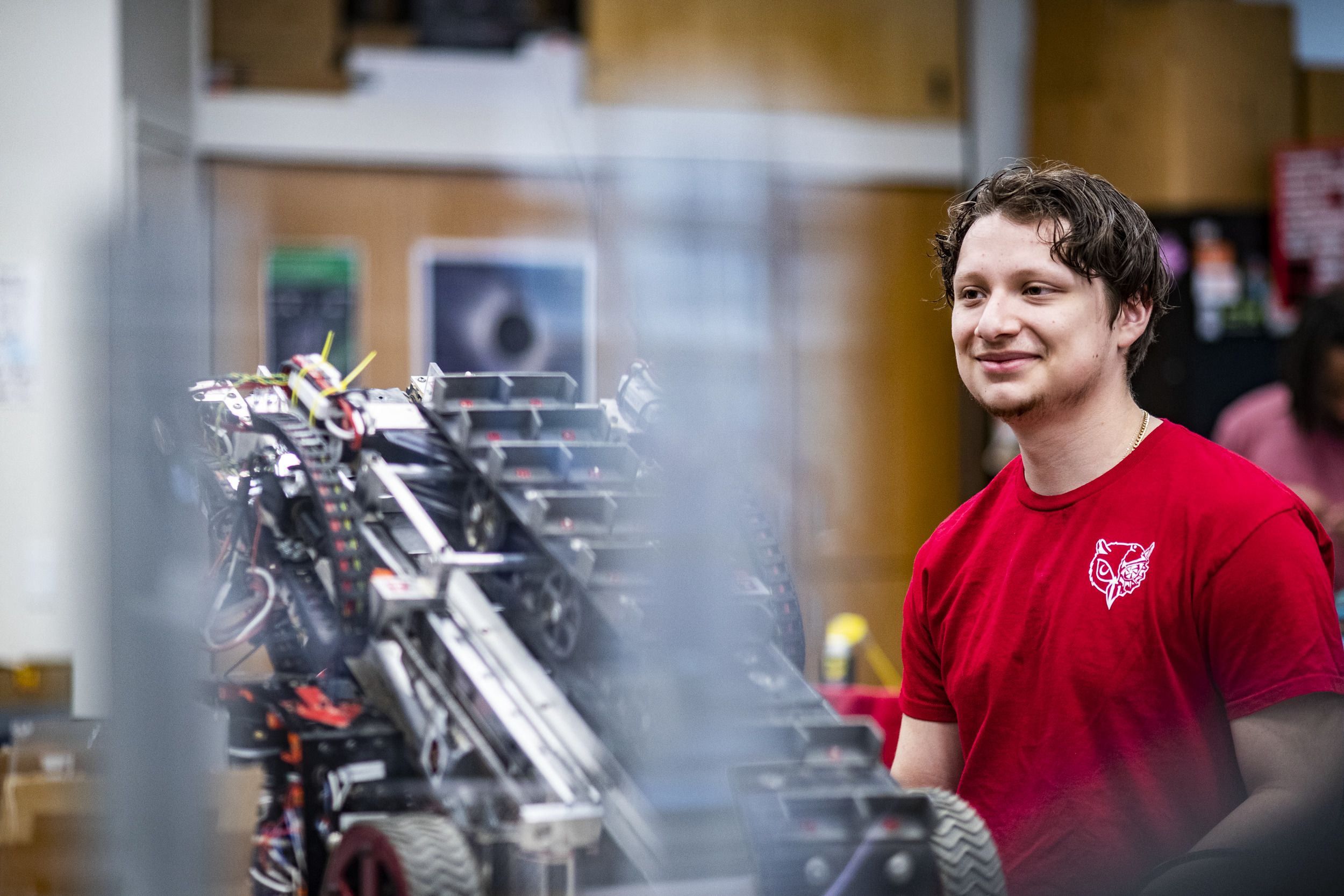
Mechanical Lead Rocco Guzman
Mechanical Lead Rocco Guzman
Previously, teams focused on mining regolith (loose, rocky material like gravel) and sifting through the substance, black point one (BP-1), which mimics lunar soil. This year, the object is to mine BP-1 and use it to construct a berm (mound) and to disregard the regolith, creating the need for a different system.
This year’s agenda for the team was very different from the previous year, as they were starting from scratch.
The fall was used for planning and design work while the spring was used for machine learning and robot assembly.
Through trials in their newly established testing arena at Temple’s Ambler Campus, the team has made some adjustments they hope will benefit them at the competition.
Even as they’re putting the finishing touches on the robot, DAVID, (named in honor of a late robotics team member) for this year’s competition, the team is already looking towards improvements they can make for next year.
The mechanical team is split into two groups, one focused on getting the robot ready for this year, and another that has been monitoring what can be improved for next year. The electrical team is organized similarly; with one group focused on schematics, planning the documentation for future years, and making recommendations for improvements, and the other on wiring the robot for the competition.
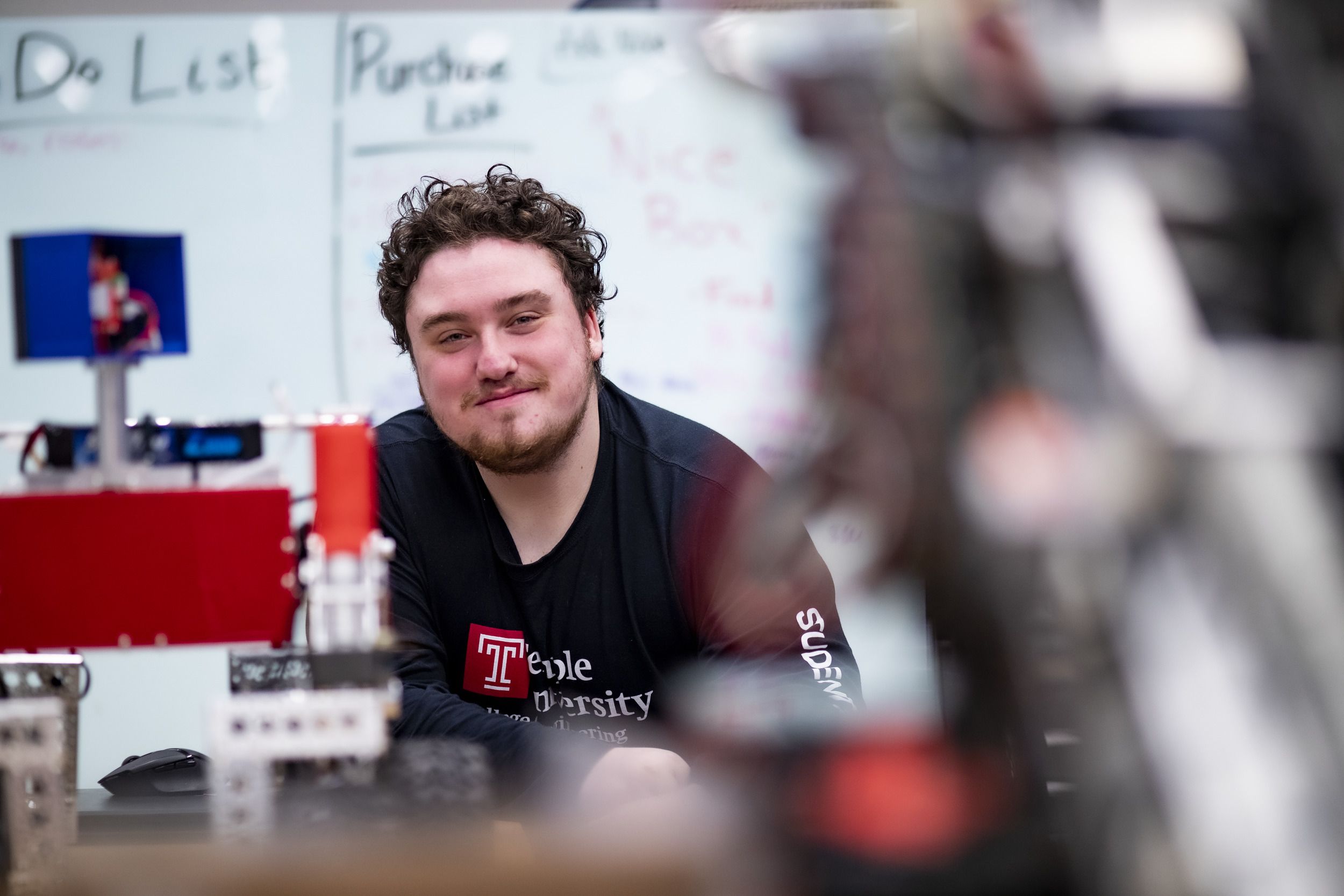
President Jared Levin
President Jared Levin
Focusing on the future is crucial for the Robotics Team as they’re hoping to achieve full autonomy for their robot by next year.
President, Jared Levin, shared that he hopes next year the robot will be programmed so that users can “just push a button” and have the robot excavate and construct the BP-1 on its own
Connecting the Disciplines
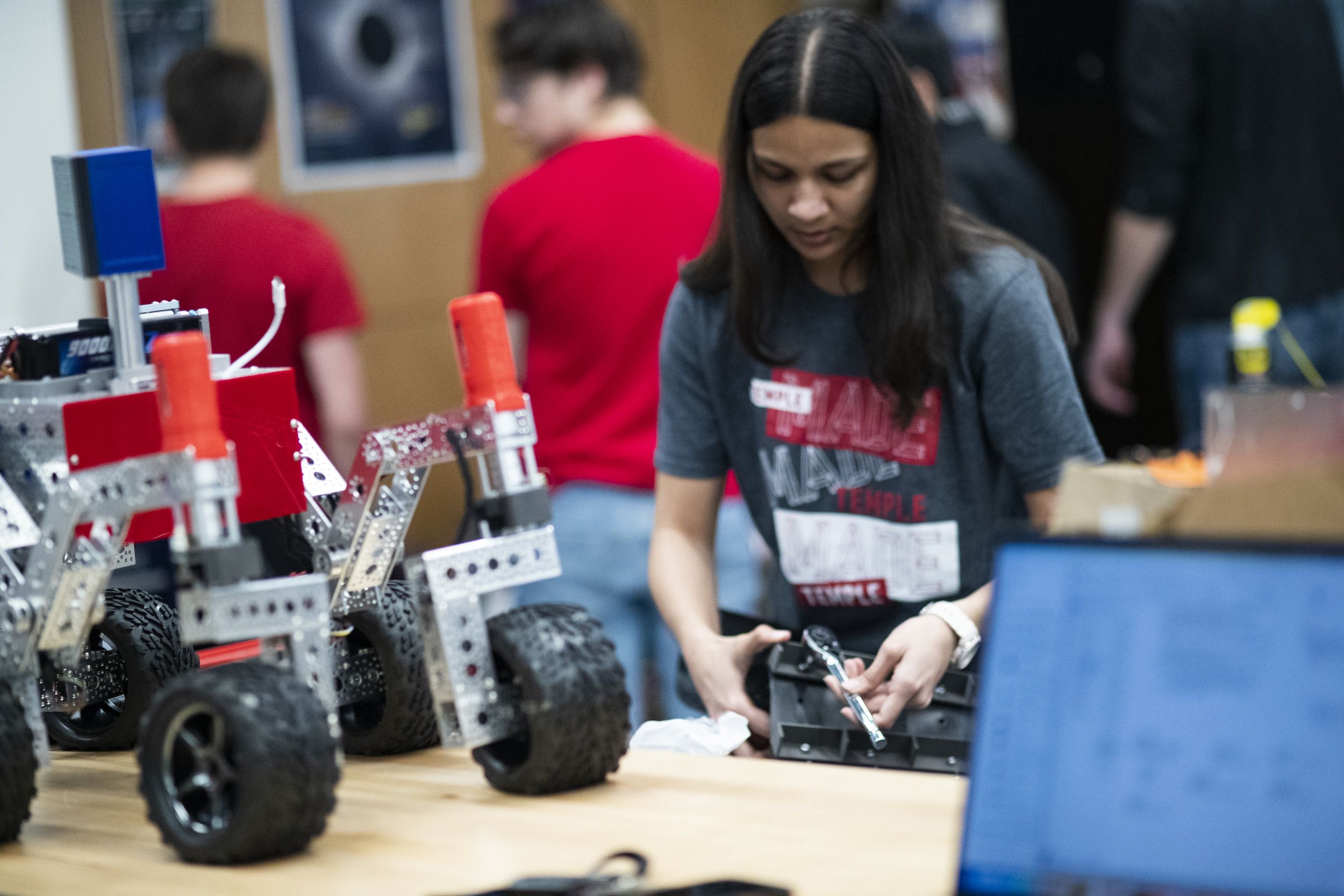
The Robotics Club is multi-disciplinary, made up of students from a variety of engineering majors, and even a few students from the College of Science and Technology.
With multiple team leads, the leadership staff ensures that all the disciplines are working together towards the common goal of a successful robot.
The Leadership Staff of the Robotics Club includes:
- President: Jared Levin, 3rd year electrical and computer
- Vice President: Malin Kussi, 1st year computer science
- Project Manager: Tanishka Shah, 2nd year environmental
- Mechanical Lead: Rocco Guzman, 2nd year mechanical
- Electrical Lead: Brian Thai, 2nd year electrical and computer
- Programming Lead: Brian Ervin, 3rd year computer science
- Website Manager: Nasier Fowlkes, 4th year computer science
- Shop Manager: Ajesh Benson, 3rd year mechanical
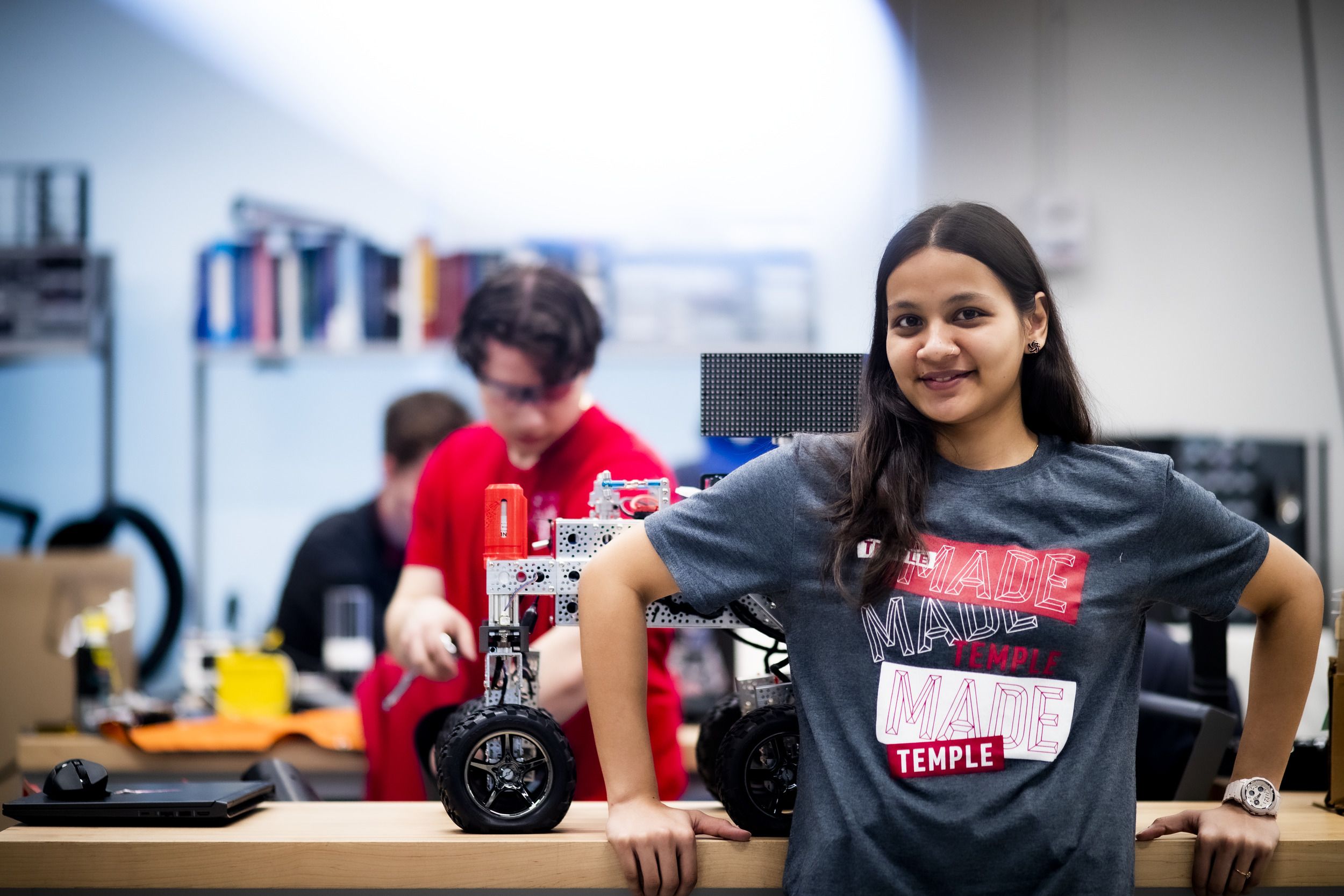
Project Manager Tanishka Shah
Project Manager Tanishka Shah
With different disciplines working separately towards a common goal, it can sometimes be difficult to make sure the groups are on the same page and timeline. That’s where Project Manager, Tanishka Shah, comes in.
She manages the timeline, getting updates from the three sub-system teams (mechanical, electrical and programming) to make sure they’re working efficiently, and relaying any issues between the teams.
"Even though they're working separately...it all has to do with working together for the robot." - Tanishka Shah
As an environmental engineering major, she doesn’t use many of the technical concepts she learns in class in her role as Project Manager. However, Shah feels that the problem-solving skills she’s learned in her major have easily translated.
There’s room for all majors on the Robotics Team and no experience is necessary to join. Mentorship is a priority for the leadership staff, and Levin has even taught younger members how to write code.
Competition Update
After three days of competing, the Temple Robotics team placed 21st out of 43 teams. While this was not enough to qualify them for competition at the Kennedy Space Center, the team is looking forward to taking what they learned and applying it to next year's competition.
On the first day of competition, many teams encountered networking issues due to unexpected interference in the arena. However, Website Manager Nasier Fowlkes, had put in several hours of work optimizing the team's router system, allowing them to troubleshoot throughout their first competition run.
However, during the first run, the Mission Control team (Jared Levin, Malin Kussi and Nasier Fowlkes) pushed the robot harder than it could handle, causing a connector to come loose and resulting in a loss of connection to half the robot's motors. While the team lost out on mining points during the first run, they still had hopes of qualifying and quickly got to work repairing the robot.
On their day off, the electrical team fixed the loose connector and repaired any additional wiring errors. The mechanical team completely reworked the robot's chute and digging belt, completely reworking the collecting/dumping system in only a six-hour span with minimal tools available. Meanwhile, the programming team solidified the robot's dumping automation, hoping to earn more points in that scoring category.
After an all-day repair session, the team returned for their second run, which showed remarkable improvement. The team ended their run with a net score of 459.92 points.
While the score was not enough to qualify them for the next round, the team is confident for next year. The competition presented an opportunity to meet with other student's from around the country to discuss strategy and view their robots. With one competition under their belt, the team seeks to improve DAVID into a robot that can contend with the best teams across the nation.
Images by Ryan Brandenberg
